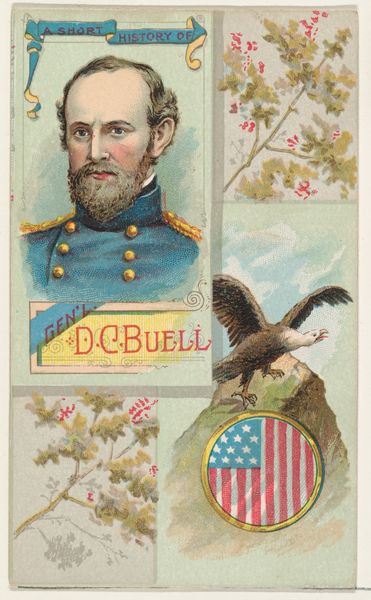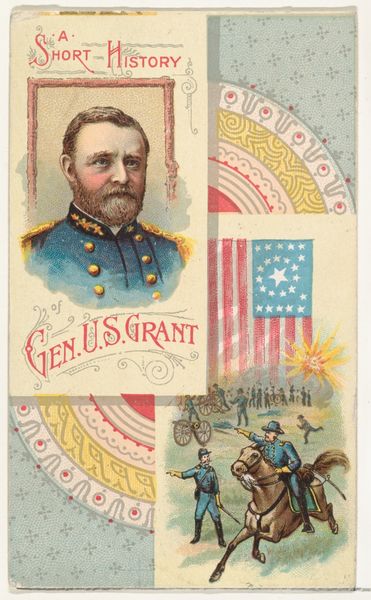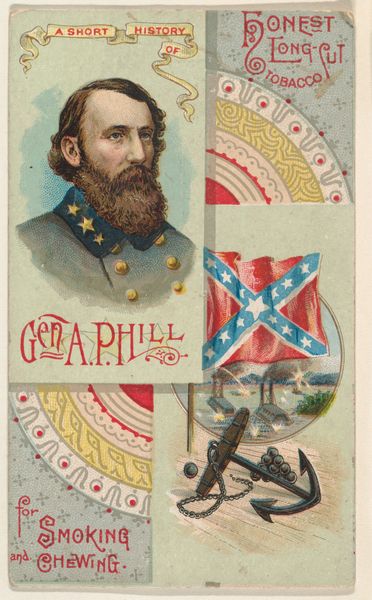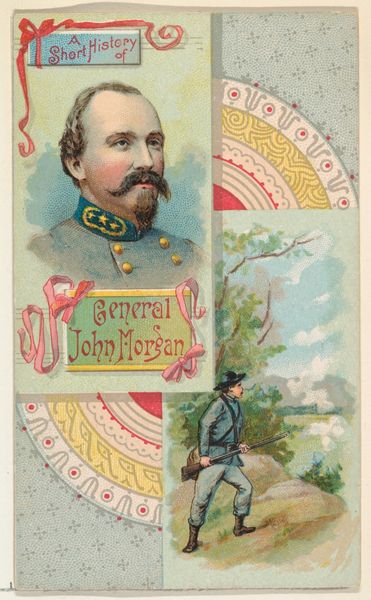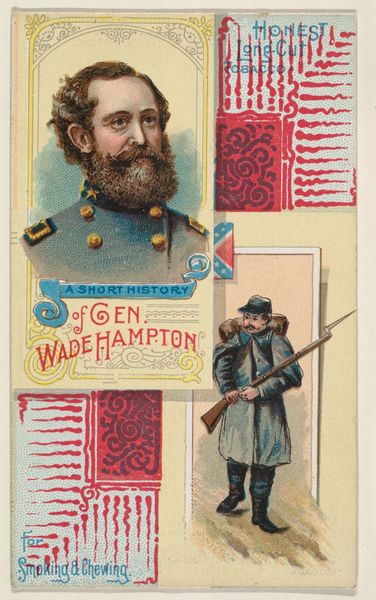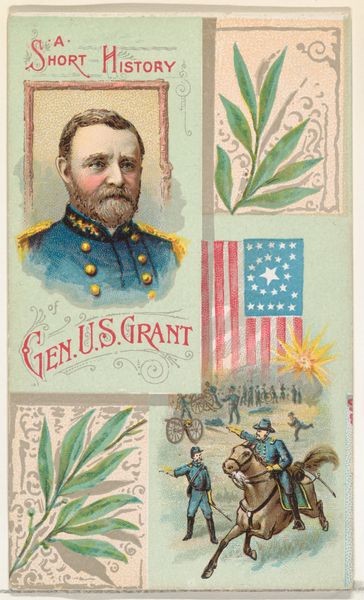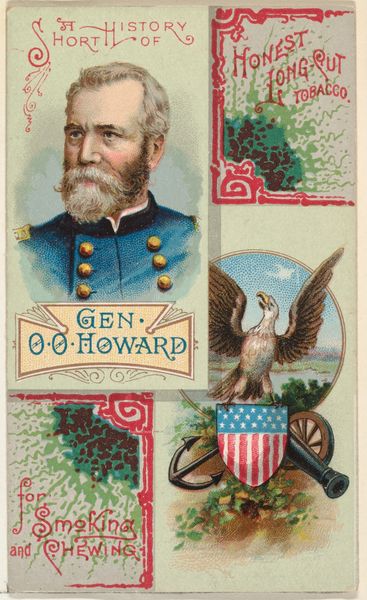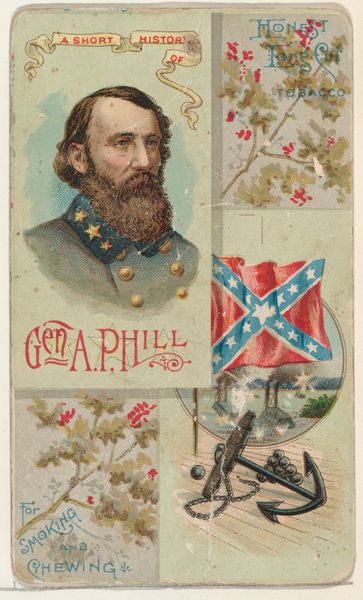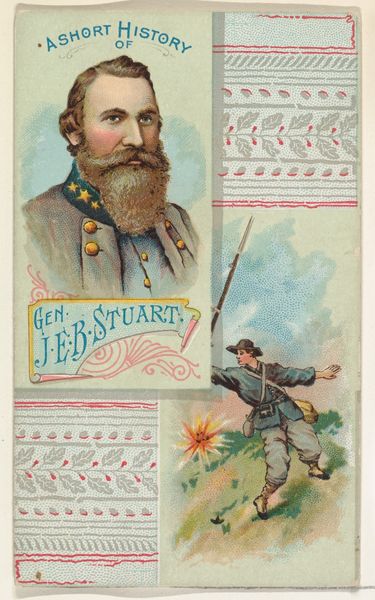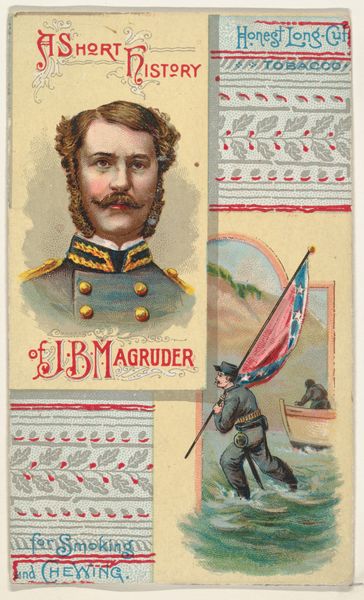
A Short History of General Don Carlos Buell, from the Histories of Generals series (N114) issued by W. Duke, Sons & Co. to promote Honest Long Cut Smoking and Chewing Tobacco 1888
0:00
0:00
drawing, coloured-pencil, print
#
portrait
#
drawing
#
coloured-pencil
# print
#
caricature
#
caricature
#
coloured pencil
Dimensions: Sheet: 4 3/16 × 2 1/2 in. (10.7 × 6.4 cm)
Copyright: Public Domain
Curator: Here we have "A Short History of General Don Carlos Buell," a tobacco card dating from 1888, produced by W. Duke, Sons & Co. as part of their "Histories of Generals" series. What's your initial take? Editor: It’s strikingly nostalgic, but with an odd sense of enforced heroism. The juxtaposition of General Buell’s somewhat stern portrait with symbols of war and peace, all neatly compartmentalized, feels like a very curated brand of patriotism. And the colour-pencil printing method here must speak to mass consumption habits. Curator: Indeed, the colored-pencil drawing hints at the mass production of such images for advertising. The overall design seems less about art and more about the dissemination of carefully constructed narratives tied to consumption. Note the general, then binoculars, the American flag all icons of national and military identity. Editor: And those icons are so cleanly rendered; you almost forget that coloured pencil is at base ground pigment, gums, and wax. Here, it feels completely divorced from the hand, transformed into a tool for reinforcing prevailing views on national history through everyday use. How many of these did someone hold whilst considering whether to light up or chew? Curator: A vital consideration. What seems interesting, however, is that Buell had a rather contentious reputation during the Civil War, facing scrutiny for perceived slowness and strategic disagreements. Perhaps W. Duke, Sons & Co. sought to soften his image, associating him with notions of honor and national pride to… well, to move product. Editor: Right. These cards weren't about conveying accurate historical information but were primarily tools to enhance the consumption experience, packaging history itself as just another commodity. They sold more than just tobacco here, in effect they sold a constructed, palatable vision of America's past for a profit. Curator: Perhaps by glancing at it daily people would believe it... like any great product placement? What I find poignant is that these commercial objects become relics, unwittingly testifying to the cultural priorities of their time. I almost feel nostalgic for a period that seemed far less afraid to market identity. Editor: I see it, yet my eye remains locked on what its tangible elements evoke, on what such material means given where the source materials were extracted, how cheap labour manifested, and who, then and now, had the capacity to engage and ingest its manufactured narratives. In essence, let the object be not an emblem of remembrance, but one of continued engagement.
Comments
No comments
Be the first to comment and join the conversation on the ultimate creative platform.
